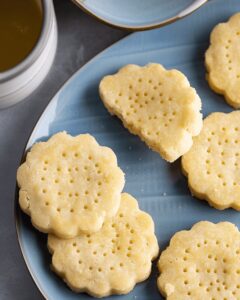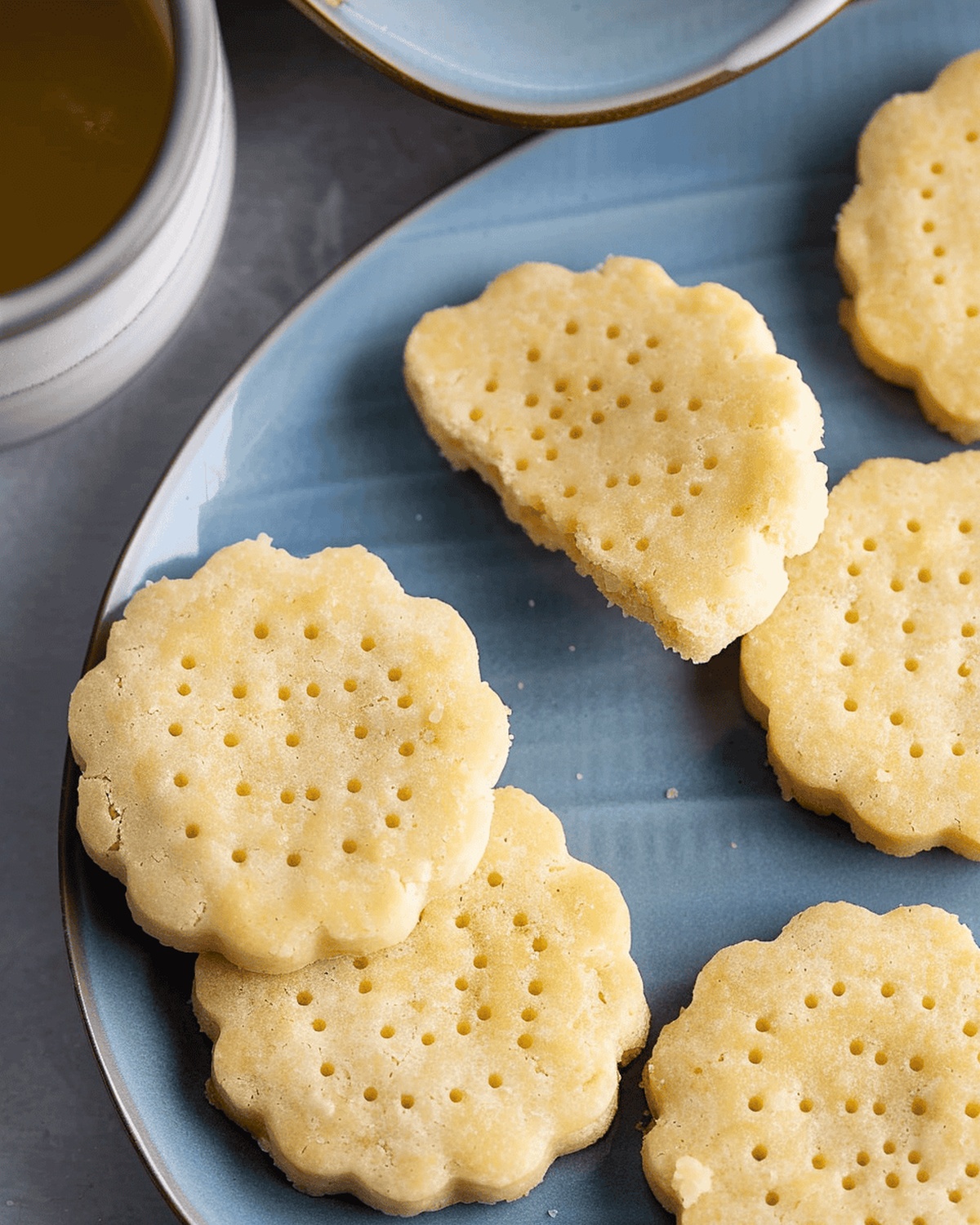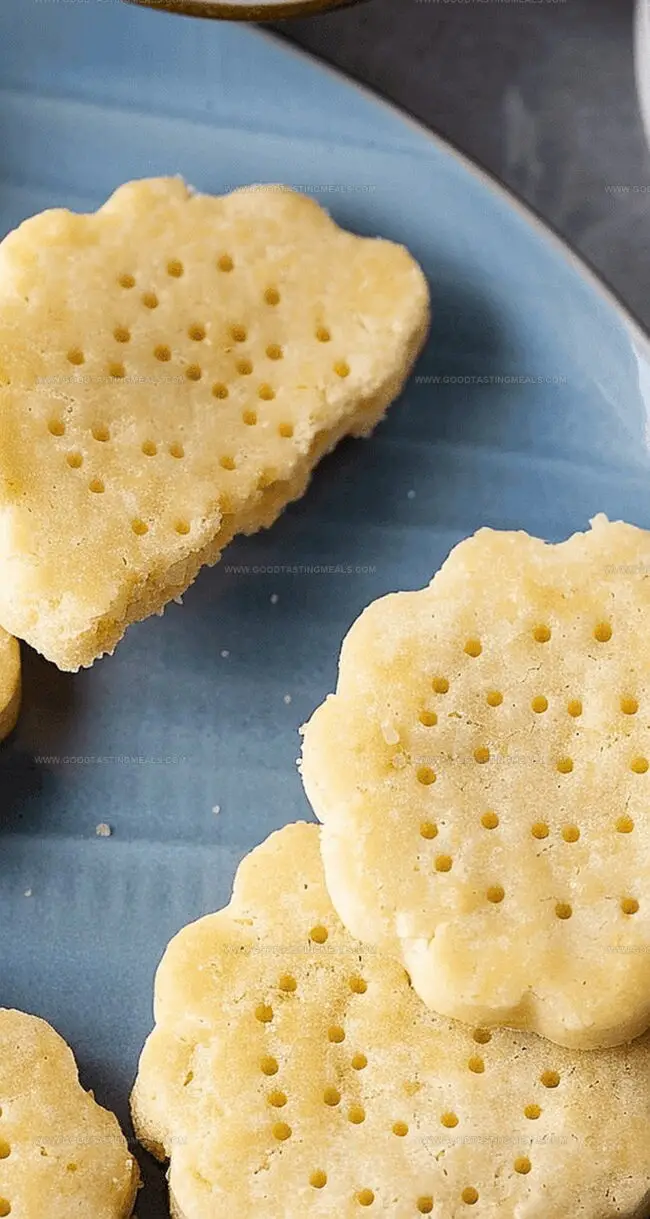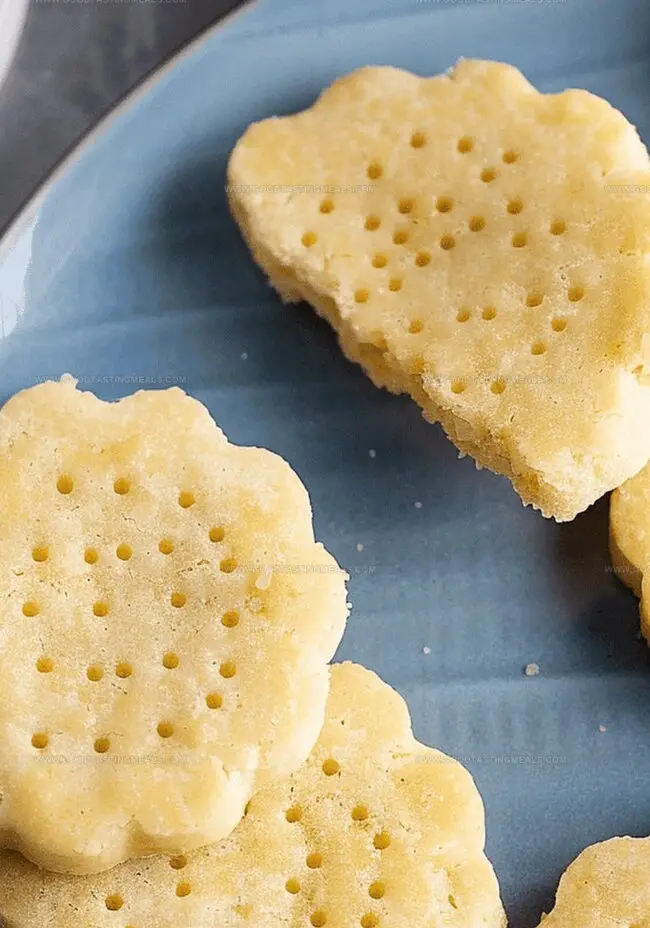The Perfect Classic Shortbread Cookies Recipe for Sweet Bliss
Buttery, melt-in-your-mouth classic shortbread cookies transport you straight to a cozy Scottish bakery.
These delicate, golden treats have a rich culinary heritage that spans generations.
Baking this classic shortbread cookies recipe requires just a few simple ingredients that dance together in perfect harmony.
Each bite promises a delightful crunch that melts softly on your tongue.
The pure simplicity of butter, sugar, and flour creates a timeless dessert that never fails to impress.
Crisp edges and a tender center make these cookies an irresistible companion to your afternoon tea or coffee.
You’ll fall in love with this effortless recipe that brings a touch of traditional warmth to your kitchen.
Quick Recipe Overview
Classic Shortbread Cookies: Ingredients Guide
For Base Ingredients:For Flour Component:For Optional Finishing:Tools for Classic Shortbread Cookie Perfection
Equipment & Tools:Instructions for Classic Shortbread Cookies
Cream together softened butter, sugar, vanilla, and salt using a mixer until the mixture becomes light and airy. The goal is a fluffy, pale texture that promises deliciousness.
Slowly incorporate flour into the butter mixture, mixing until a cohesive dough emerges. The mixture might seem crumbly at first, but keep working it until a solid dough forms.
Shape the dough into a disk or log, then wrap securely in plastic. Refrigerate for at least 30 minutes to help the flavors meld and make the dough easier to handle.
Preheat the oven to 350°F and line baking sheets with parchment paper. This ensures even baking and prevents sticking.
Roll out the chilled dough on a floured surface, cutting into rounds or slicing into even pieces. Place cookies with enough space between them on the prepared sheets.
Bake until the edges turn a soft golden color, about 20 minutes. The centers should look dry and feel set when touched.
Let cookies rest on the baking sheet for 10 minutes, then transfer to a cooling rack. Serve and enjoy these buttery, melt-in-your-mouth treats with your favorite beverage.
Helpful Hints for Classic Shortbread Cookies
Serving Classic Shortbread Cookies Beautifully
Storage Plan for Classic Shortbread Cookies
Print
Buttery Shortbread Cookies
- Total Time: 1 hour 40 minutes (including chilling time)
- Yield: 22 1x
Description
Scottish shortbread cookies elevate simple ingredients into a buttery, melt-in-your-mouth delicacy. Bakers can create these traditional treats with minimal effort and maximum satisfaction.
Ingredients
- 1 cup (227 grams) unsalted butter, softened (preferably European-style)
- ½ cup (100 grams) sugar
- 2 cups (240 grams) all-purpose flour
- ½ teaspoon Diamond Crystal kosher salt
- 1 tsp vanilla extract
Instructions
- Creaming: Whip butter, sugar, vanilla, and salt in a mixer until the mixture achieves a pale, silky consistency with a light, airy structure.
- Dough Formation: Blend flour into the butter mixture on low speed, using a spatula to incorporate ingredients thoroughly and create a cohesive, sturdy dough.
- Chilling Preparation: Shape dough into a flat disk or cylindrical log using plastic wrap, then refrigerate to solidify texture and intensify flavor profiles.
- Oven Preparation: Position oven racks in lower and upper thirds, preheat to 350°F, and line baking sheets with parchment paper for optimal baking conditions.
- Shaping Technique: For cut-out cookies, roll dough on flour-dusted surface to 1/4 to 1/2 inch thickness, using gentle pressure to maintain structural integrity. For slice-and-bake method, cut uniform slices with a sharp knife, maintaining consistent thickness.
- Cookie Placement: Arrange cookie pieces on prepared sheets, spacing them one inch apart to allow proper spreading and even browning during baking.
- Baking Process: Bake until edges and bottoms turn golden, rotating pans midway to ensure uniform coloration and consistent texture throughout.
- Cooling Method: Remove cookies when surfaces appear matte and dry, cool on baking sheets for ten minutes, then transfer to a wire rack for complete cooling.
- Serving Suggestion: Present shortbread cookies at room temperature as a delightful accompaniment to afternoon tea or as a standalone treat.
Notes
- Butter Temperature Matters: Ensure butter is softened but not melted, as the right consistency is crucial for creating a smooth, velvety cookie texture.
- Chill Dough Strategically: Refrigerating the dough allows flavors to meld and prevents cookies from spreading too much during baking, resulting in a more structured shortbread.
- Rolling Technique Impacts Texture: Use gentle, even pressure when rolling dough to maintain its delicate structure and prevent tough, dense cookies.
- Baking Precision Counts: Watch cookies closely during baking; they should develop a light golden color without overcooking, which can lead to dry, crumbly results.
- Prep Time: 20 minutes
- Cook Time: 20 minutes
- Category: Desserts, Snacks
- Method: Baking
- Cuisine: Scottish
Nutrition
- Serving Size: 22
- Calories: 140
- Sugar: 5 g
- Sodium: 20 mg
- Fat: 10 g
- Saturated Fat: 6 g
- Unsaturated Fat: 4 g
- Trans Fat: 0 g
- Carbohydrates: 14 g
- Fiber: 0 g
- Protein: 1 g
- Cholesterol: 30 mg




Sophie Martin
Co-Founder & Content Creator
Expertise
Education
Stellenbosch University, South Africa
South African Chefs Academy, Cape Town
Sophie Martin is the nutrition brain and feel-good foodie at Good Tasting Meals. With a degree in Human Nutrition from Stellenbosch University and chef training from the South African Chefs Academy, Sophie brings balance to the table, literally. She loves creating meals that are easy to make, great to eat, and good for your body too.
Her recipes are made for everyday living, with a little flair and a lot of heart. Sophie’s not here to count calories, she’s here to show you how fresh, simple food can fit into your life, taste amazing, and still be nourishing.